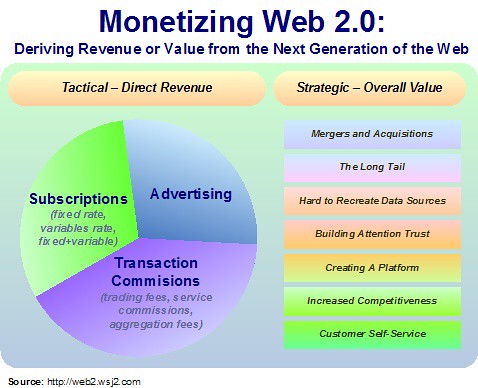Image courtesy of cafecredit
Introduction
Britizen explores the concept of a social network where the social ‘credit score’ of members and the groups they belong to are co-dependent. This posts considers the academic literature related to developing financial and social credit scores from social network and online shopping platform data. As a result of this research we decided that in the UK it is more feasible to introduce a ‘social’ rather than ‘financial’ credit score social media application.
Analysis of similar Systems looks more closely at existing online social network systems.
Determining credit scores
In the UK, banks and other financial institutions use historical data to evaluate how ‘credit worthy’ an individual customer appears to be. This is used to determine the risk involved in making each loan, and the appropriate interest rate and or security required.
Credit reference agencies such as Experian[1] and Equifax[2] are used to share knowledge of consumer credit behaviour. The financial history of businesses is also recorded and shared via credit reference agencies such as Moody[3], Standard & Poor[4], and Fitch Ratings.[5]
In some countries (including China) micro businesses and consumers find it difficult to obtain credit from mainstream banks and financial instructions because these bodies do not hold such data about them (Kshetri, 2016; Shu, 2015; Wei et al., 2014) Data about online consumer behaviour can be gleaned from:
- transaction data held by online shopping portals such as Alibaba[6] and Amazon.
- online payments records from online payments systems such as Alipay[7]and PayPal
- non-financial data gleaned from users posts and relationships on social media platforms such as Facebook[8]
China Rapid Finance claim to use both financial and ‘unstructured online social’ data[9] to predict whether a borrower is likely to repay a loan. Kapron (2016) suggests that it is unlikely that systems of this kind could operate in the US due to privacy concerns. in general the EU has stricter privacy legislation than the US; it is thought unlikely that use of unstructured social network data for financial credit scoring would be considered acceptable in the UK at present.
Sesame Credit uses a combination of five factors to assess credit. These include “users’ credit history, behavioral habits, ability to pay off debts, personal information and social networks” (China Daily, 2015). Members can choose to publish their score. Gamification encourages competition between users as to who has the highest score; and incentivizes ‘desirable’ behaviour (making payments promptly). Users also have a direct incentive to recruit others to the platform: their own score increases with the number of their friends. Game theory can be used to model such effects.
In our focus group a Sesame Credit user commented that most Chinese people ‘just know that the more they consume, the higher mark they will get‘. Gamification in Sesame Credit appears to successfully modify user behaviour; spending more to increase a personal score and obtain more benefits was a common thread.
Facebook have acquired a US patent[10] which includes using the credit rating of a user’s social network to determine whether to reject or proceed with a loan application (Lunt and Facebook, 2012). Kapron states that they have run and withdrawn a pilot experiment on these lines.
Academic literature includes Selde’s study which determined that Facebook data can be used to derive a useful financial credit score (Selde, 2013). Wei at al also researched the potential effects of using social connections and data to determine credit scores; and suggest that low scoring individuals might be motivated to improve their behaviour in order to improve their scores.
Wei et al also concluded that there is a risk groups will become stratified (homophily) to protect their scores. In a different context; Kossinet and Watts carried out an empirical study into evolving social networks at a large university; and concluded that the presence of strong ties between two strangers and a mutual aquaintance was stronger than the effects of homophily expressed as class, age, and gender in that situation. If this effect also applies to Britizen it could reduce the tendency of strong triadic closure to result in a very stratified network.
References
China Daily, 2015. Sesame Credit helps you open sesame – Business – Chinadaily.com.cn [WWW Document]. URL http://www.chinadaily.com.cn/business/2015-01/28/content_19431324.htm (accessed 3.4.17).
Kapron, Z., 2016. Measuring Credit: How Baidu, Alibaba And Tencent May Succeed Where Facebook Failed [WWW Document]. URL https://www.forbes.com/sites/zennonkapron/2016/03/17/measuring-credit-how-baidu-alibaba-and-tencent-may-succeed-where-facebook-failed/#332b551327c2 (accessed 3.2.17).
Kshetri, N., 2016. Big data’s role in expanding access to financial services in China [WWW Document]. URL http://dl.acm.org/citation.cfm?id=2906812 (accessed 3.2.17).
Lunt, C., Facebook, I., 2012. Authorization and authentication based on an individual’s social network. US9100400.
Selde, E., 2013. Study of credit scorecard using only Facebook data – Big Data Scoring.
Shu, C., 2015. Data From Alibaba’s E-Commerce Sites Is Now Powering A Credit-Scoring Service | TechCrunch [WWW Document]. URL https://techcrunch.com/2015/01/27/data-from-alibabas-e-commerce-sites-is-now-powering-a-credit-scoring-service/ (accessed 3.2.17).
Wei, Y., Yildirim, P., Bulte, V. den, Christophe, Dellarocas, C., 2014. Credit Scoring with Social Network Data. doi:10.2139/ssrn.2475265
[1] http://www.experian.co.uk/
[2] https://www.equifax.co.uk/
[3] https://www.moodys.com/
[4] https://www.standardandpoors.com/en_US/web/guest/home
[5] https://www.fitchratings.com/site/home
[6] https://www.alibaba.com
[7] https://global.alipay.com/
[8] https://www.facebook.com
[9] http://chinarapidfinance.com/
[10] US9100400



